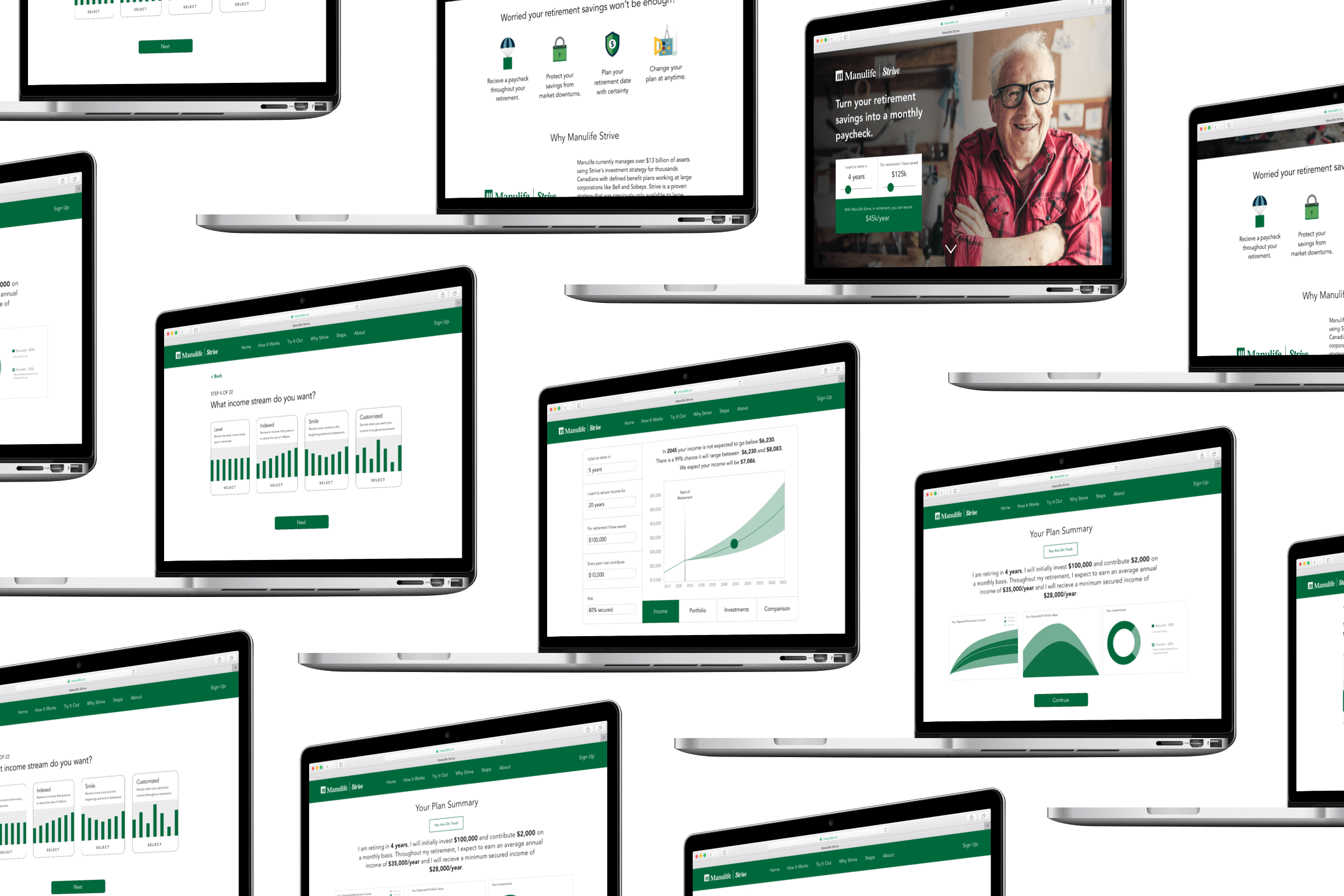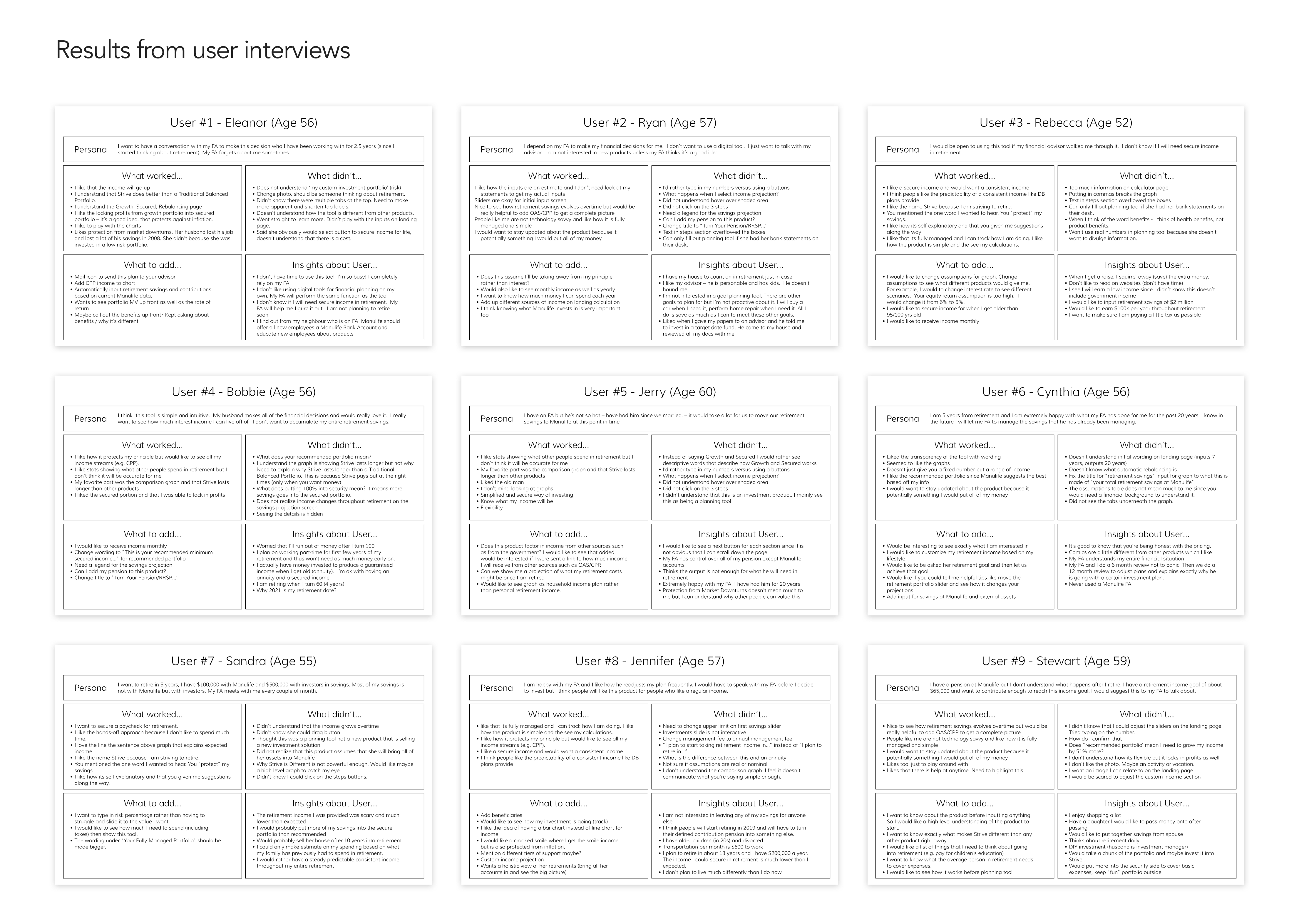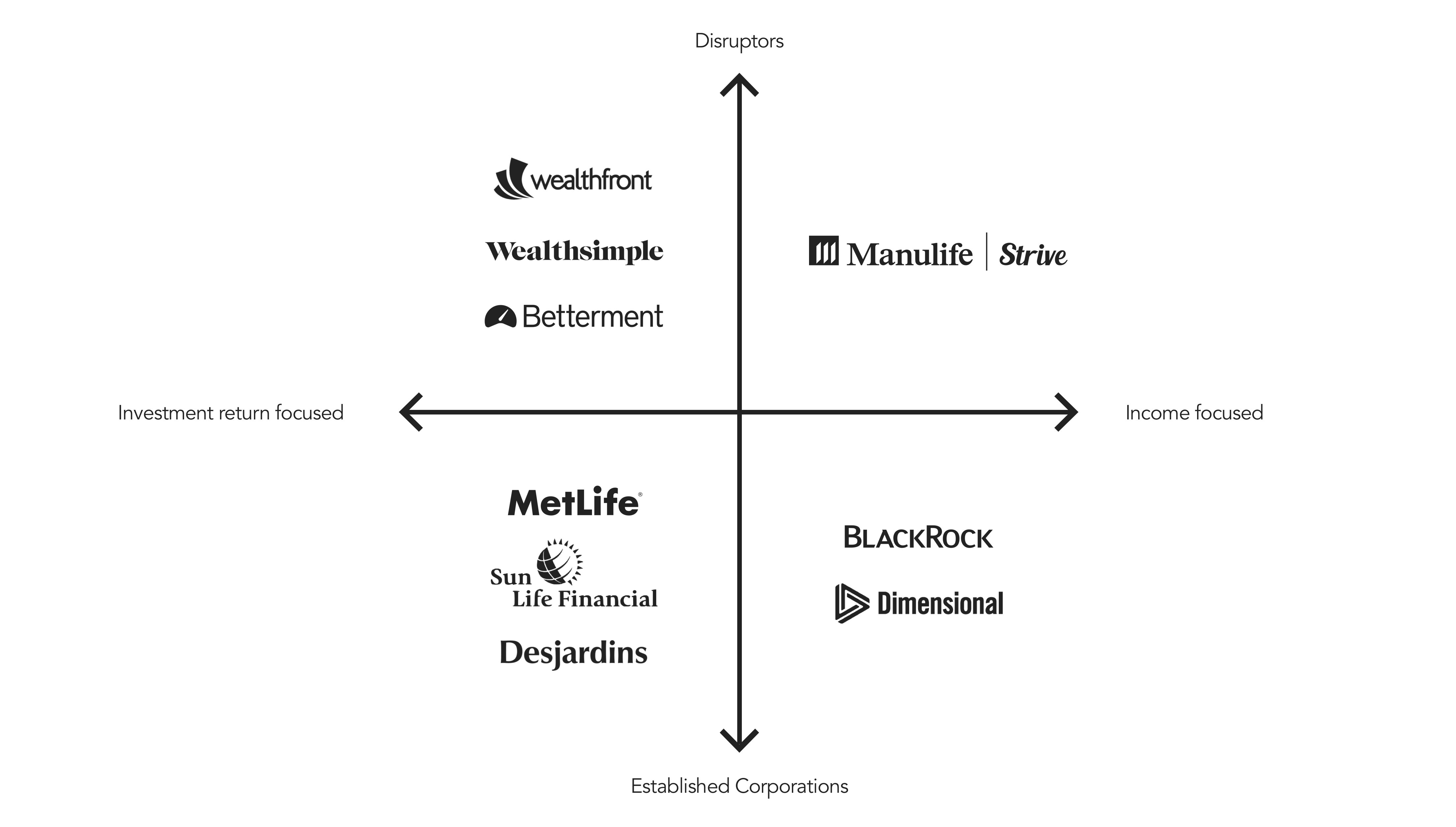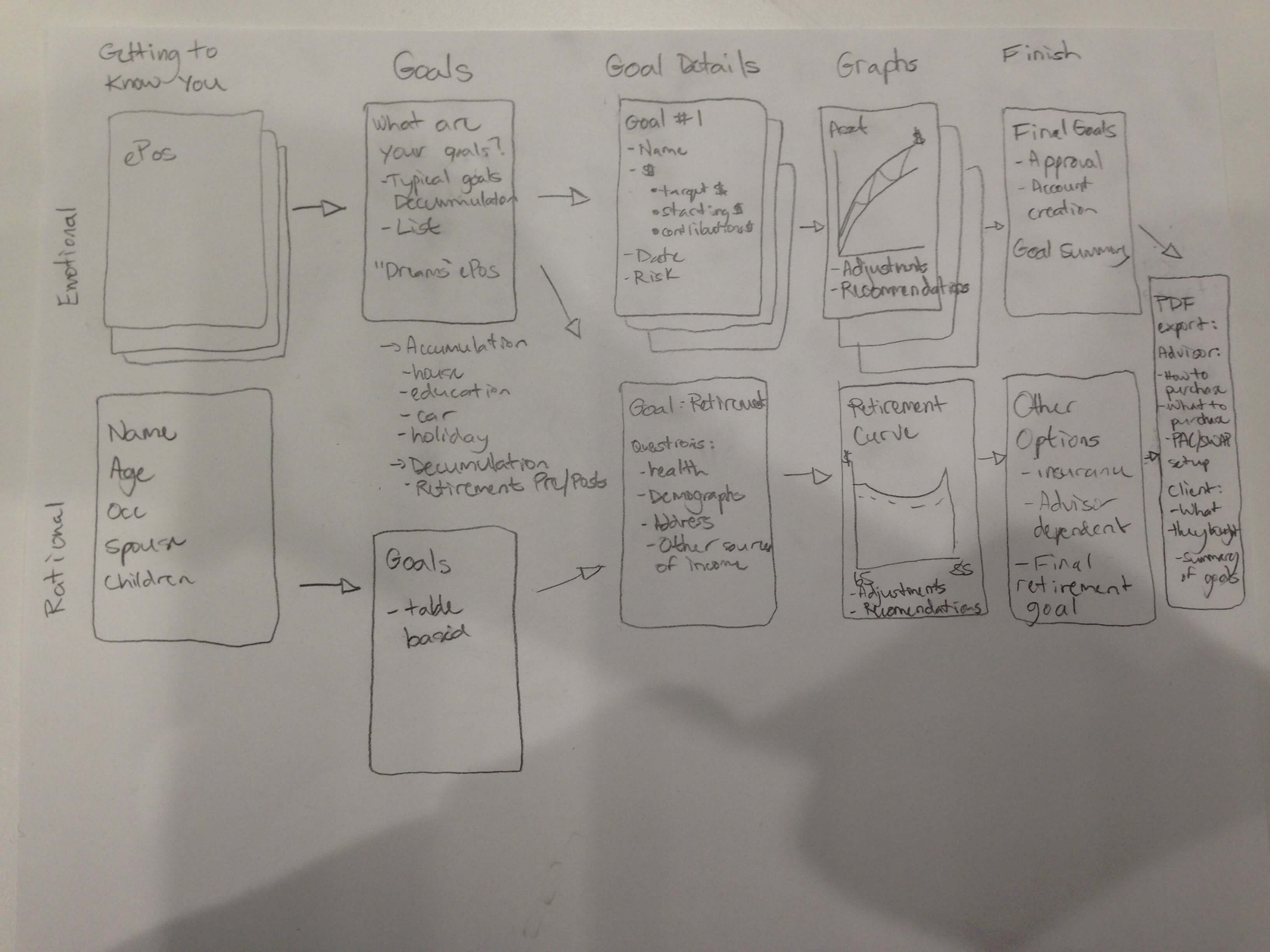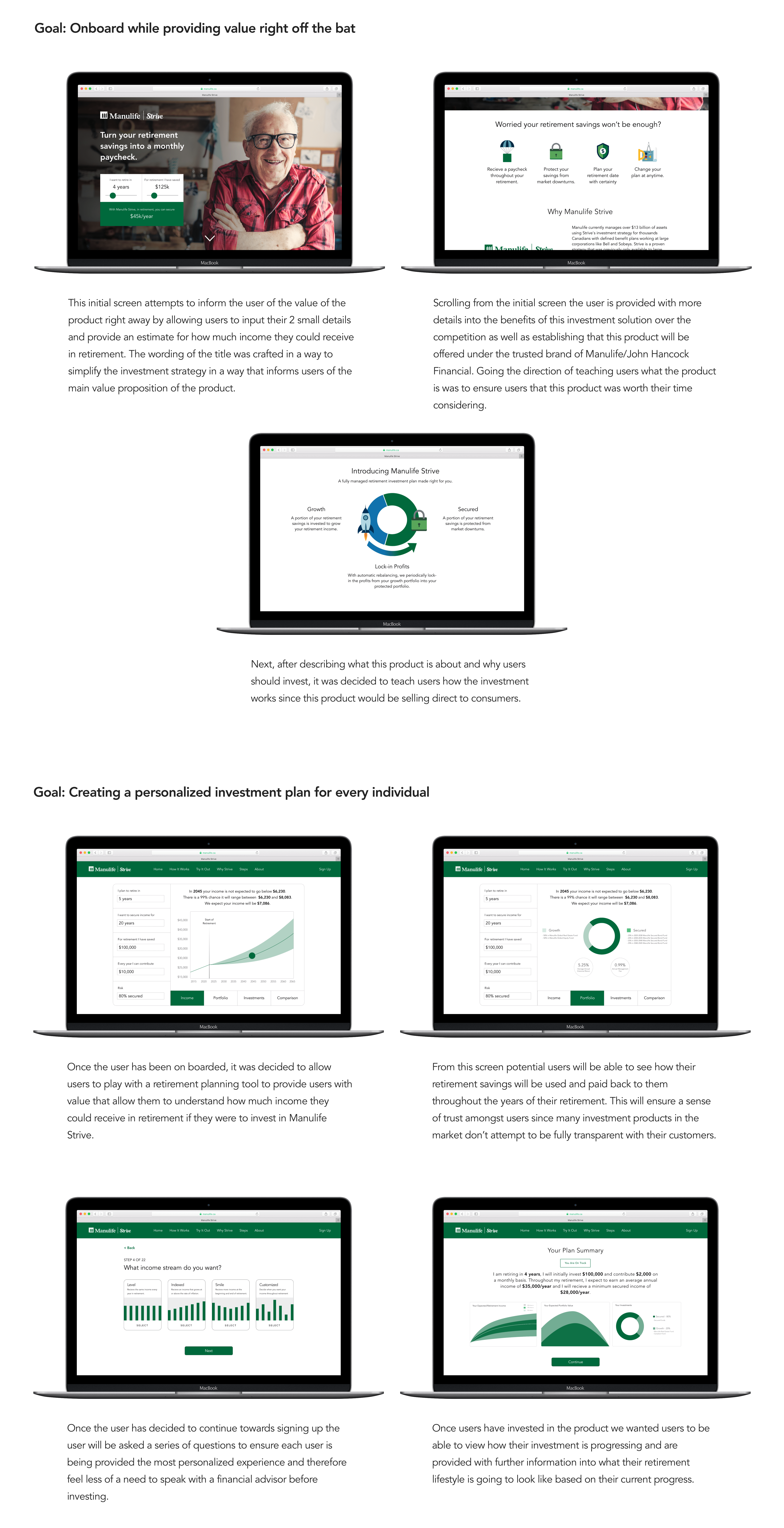Context
Attempting to disrupt an industry that needs disruption
During my second 4-month internship, I worked in Manulife/John Hancock’s innovation lab called the Lab of Forward Thinking (LOFT). The lab was introduced in 2014 to bring about innovation in the company. It was a particularly fun term since all the teams within LOFT, that span across Boston, Toronto, and Singapore, work with thought leaders within the company to design and build innovative solutions for Manulife/John Hancock’s customers in efforts to build competitive advantages in the financial services industry; an industry that’s ripe for disruption. Within my team of 5 other full-time Innovation Fellows, we we’re tasked towards solving a company-wide risk of retiring clients moving their savings to their local bank within the near future.
The Problem
A risk of losing of $46 Billion
Within the next 10 years, 253 million people will be retiring in North America and Asia; 1 million of which are Manulife clients. So, my team set out to understand how Manulife/John Hancock can go about solving these clients’ biggest problems so that they continue being customers into retirement. With this many clients retiring, there is a possible risk that these customers may decide to withdraw their pensions from Manulife/John Hancock and deposit them at their local bank. This potential risk has been estimated to result in a loss of $46 billion in assets over the next 15 years within North America alone. We first started this process of understanding these clients’ by undergoing a discovery phase. In this phase, we interviewed people going into retirement to find common frustrations amongst future retirees. In the end, we discovered 2 major areas that people had trouble with and we had the capability to help with. First, future retirees don’t know how much income they will need in retirement and, second, they are afraid of their retirement savings running out earlier than planned. So, our team set out the challenge towards solving these 2 problems.
The Goal
Helping future retirees retire with confidence
In efforts towards solving these 2 major user problems our team set out to develop a new retirement investment product and wrap it in a retirement planning app that would focus on helping future retirees with understand how much income in retirement they will need in retirement and providing a means towards funding their desired lifestyle for the length of their retirement. With the recent acquisition of Standard Life, our LOFT team had access to pioneers within the financial industry who had developed a new kind of investment strategy that had previously only been available to large corporations. Using a user-centric approach towards solving these pressing user problems, our team worked with those from the Standard Life division towards providing their new investment capability towards our target market of future retirees.
My Role & Team
Working in a start-up within a large corporation
Joining my team Visiting Innovation Fellow, I took on the role of as a UI/UX design intern while working alongside 1 full time full-stack developer and 1 full time product manager. We partnered with Manulife Asset Management and Canada Retail Investments to build Strive using the lean agile software development methodology. As the UI/UX design intern on the team, I worked on crafting the end-to-end user experience of the product and helped with defining the direction of the product by speaking with potential end users and stakeholders within the company. The goal of the 4-month term was to create a working Minimum Viable Product (MVP) to present to internal executives which in turn would provide our team the funding to grow and build out a final product.
Business Goals
Ensuring current customers don't leave
Before beginning our journey towards solving problems of existing customers, we first solidified what business goals this project would provide to the company to gain buy-in from internal executives. Learning from others within the company we established that the Strive project would provide the potential for significant profit growth in 3 key areas:
Grow Assets Under Management (AUM) by white labeling and licensing the Strive platform to pension sponsors.
Retain Assets Under Management (AUM) by increasing retirement roll-over capture which will preserve investment fee revenue.
Cost Reduction since the far majority of fund sales go through the financial advisor channel, by going direct to the consumers we can avoid paying commission to financial advisors.
User Research
Interviewing and testing with 26 potential users. Taking a user-centered approach throughout the entire process
Throughout the entire design process, I helped with organizing user interviews with 26 different individuals within our target demographic. In these interviews, I helped focus our team’s vision by asking specific questions that would help us understand how people within our target market thought and how they feel about retirement. Our team gained valuable insight into how future retirees are planning for retirement, what their current methods are for financial planning are, and understanding what they wanted out of a financial institution like Manulife/John Hancock. I captured these findings about these users and how they felt about our current progress in our prototype, depending on when the interview took place, in the format displayed below.
